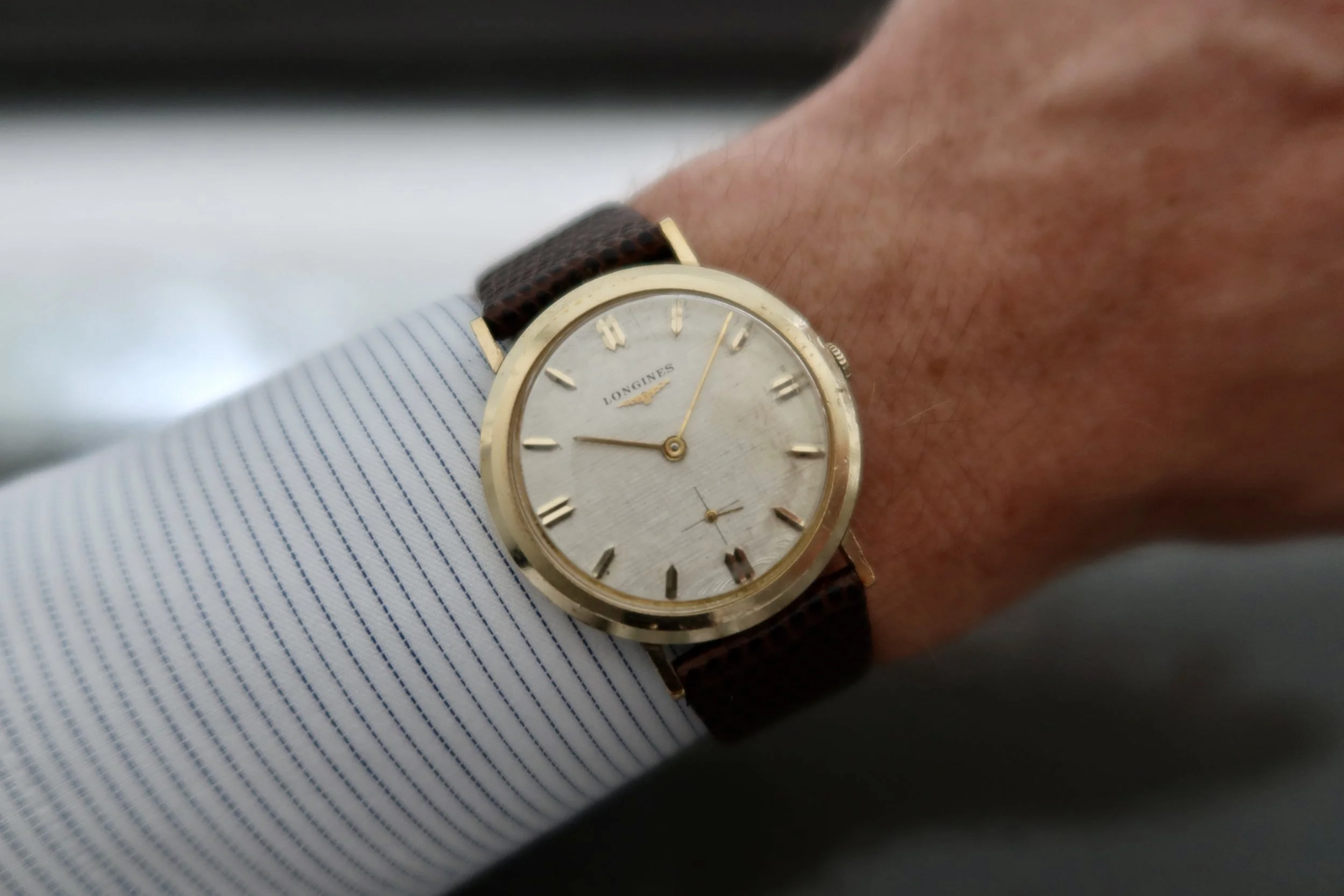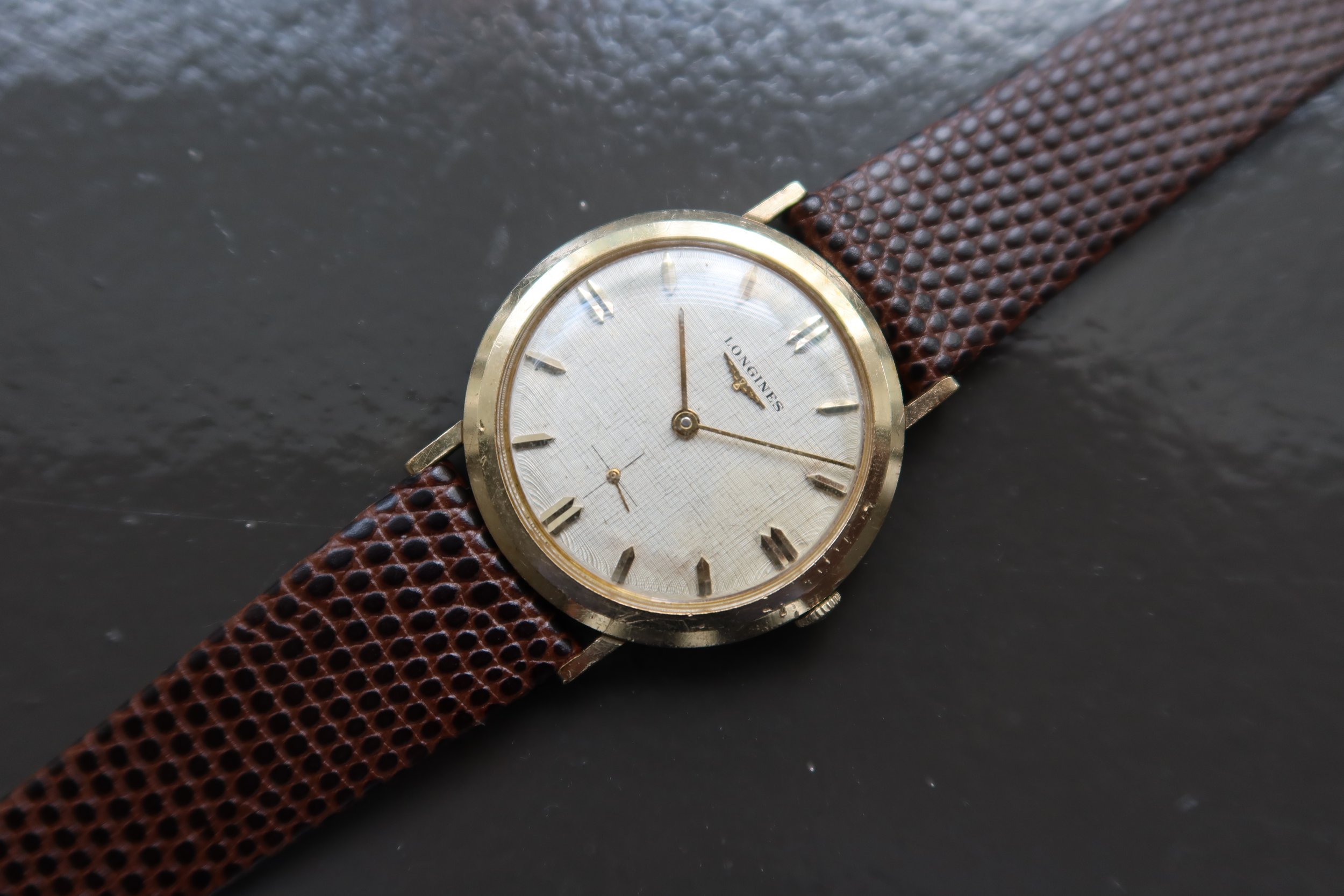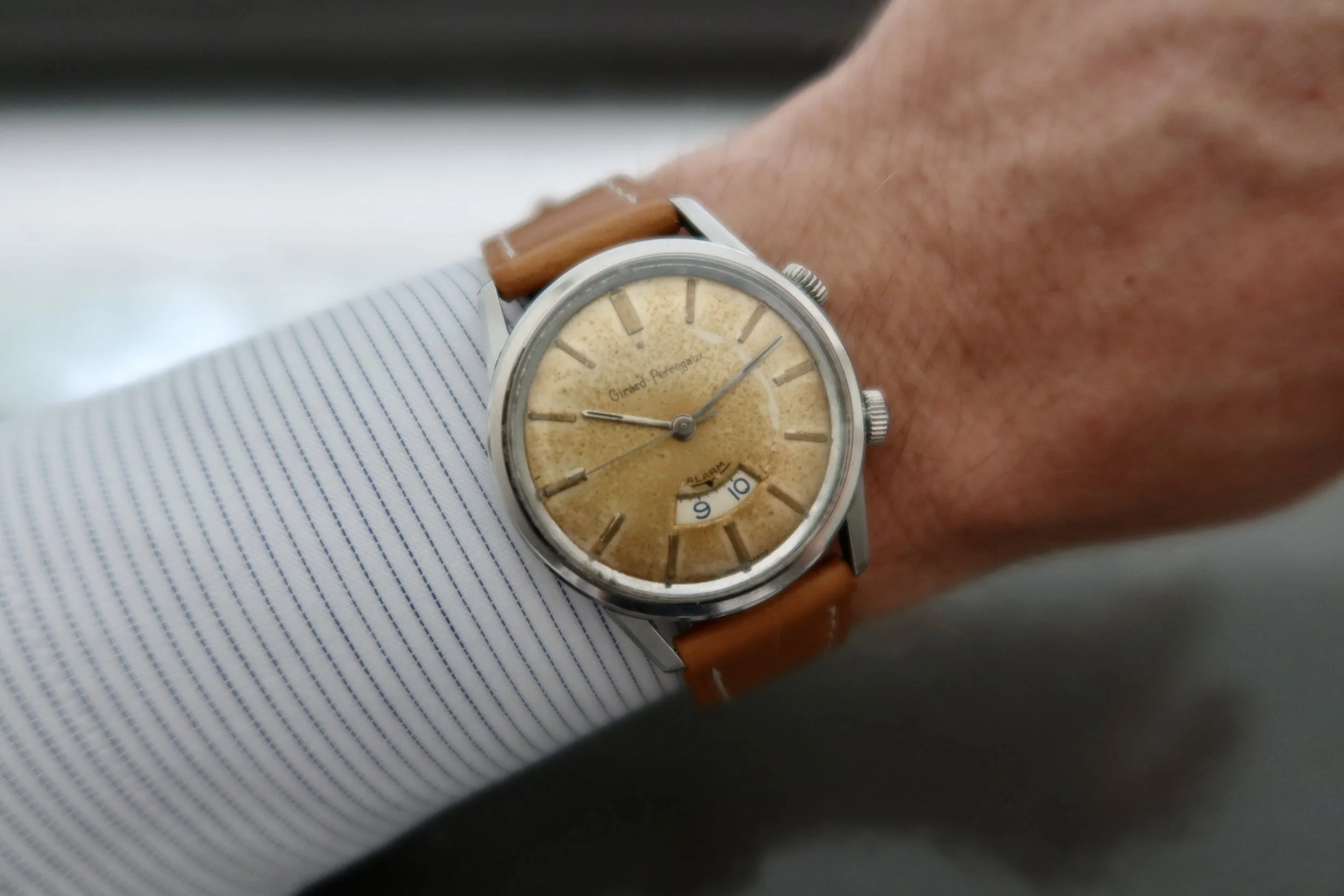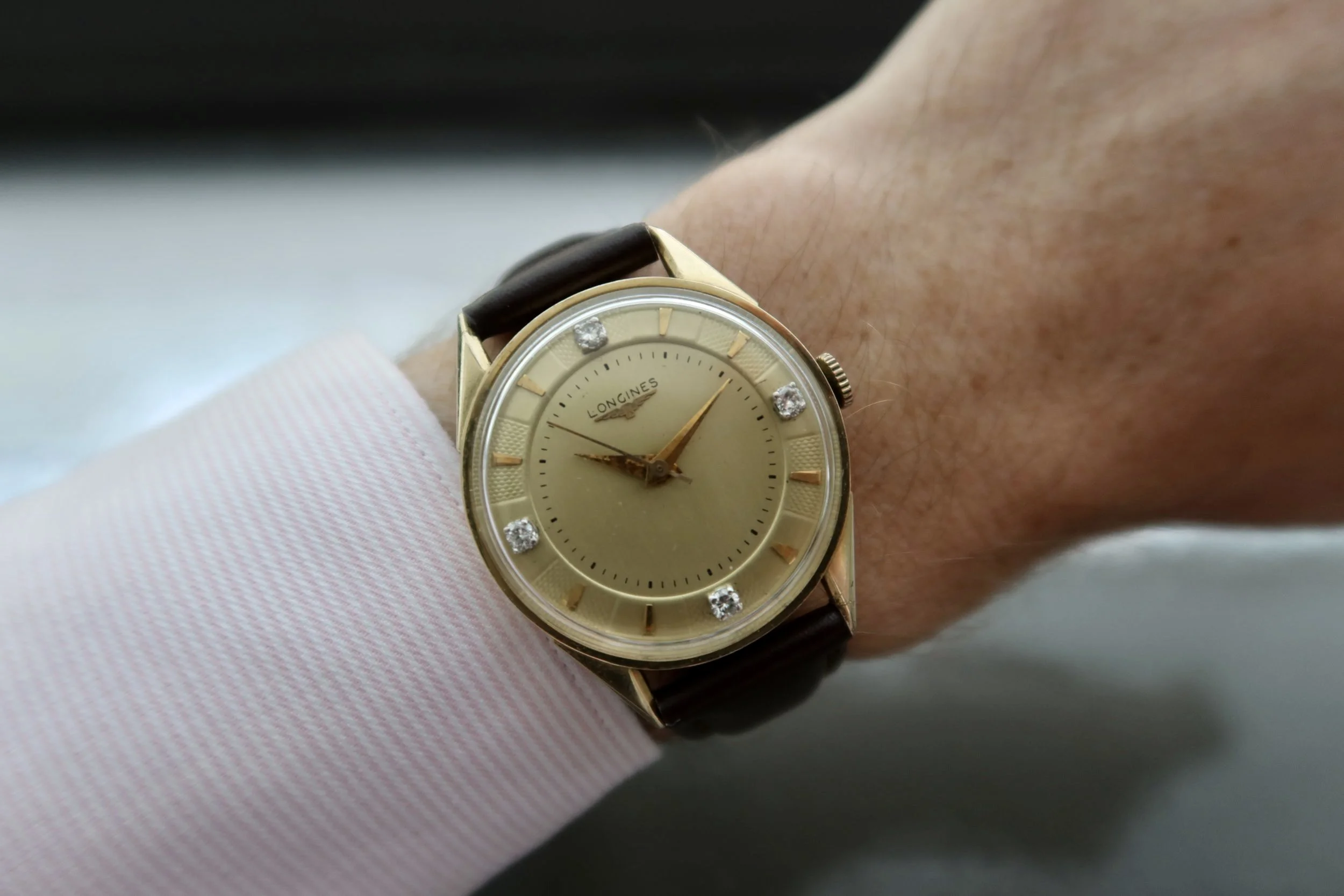The 1962 Longines reference 1116 Linen Dial
Uncommon dials are all the craze with watch collectors. It is an added layer of intrigue where a watch company decided to deviate from their normal path of a specific reference. There is some exclusivity to uncommon dials as well, because being uncommon, means rarity, and rarity is something every collector is chasing for their collection.
The Longines today is a bit of an enigma. It is a reference 1116 based on its’ caseback inscriptions. After a ton of research, there doesn’t seem to be many mentions of this specific reference, which is actually quite cool. Even cooler is the fact that it features a linen dial. Longines has produced other watches with linen dials in their past, so it is not uncommon for the brand. But it still is excited to find it on a reference that doesn’t seem to be too common. More on the dial later.
Based on the serial numbers for this reference 1116, the watch was manufactured in 1962. The watch is an example of how Longines did business during this time in the USA market. It was sold by the Longines-Wittnauer Watch Company that operated out of New York and Montreal. The companies name is engraved on the inside case back. Wittnauer was a successful brand in the USA, and was acquired by Longines in 1950, just after World War II where they became a distribution partner for Longines. In 1969, Longines-Wittnauer was sold to Westinghouse Electric Corporation and in 1994, Longines ended their distribution relationship with Wittnauer. But, during their partnership, many different models hit the market that are of interest to collectors today.
An additional inscription on the caseback is the logo and stamp “S&W”. S&W was Schwab & Wuispard Case Co. Schwab & Wuispard was founded between the 1920’s and 1930’s and was located in Manhattan, New York. They were originally located across the street from the UN, but later relocated to Woodside, NY. They manufactured cases for companies like Hamilton, Elgin, Longines, Girard Perregaux, and Rolex. They closed their doors in 1963.
The case is a 33mm, 10k gold filled case. The case is fairly thin, with a bubble on the back where the movement slots in. Interestingly, it does not have a caseback to access the movement of the watch. One has to pop the crystal off of the watch and then lift off the dial in order to get access to the movement, caseback serial numbers, and inscriptions.
Once the movement is exposed, you can see the beautiful caliber 370. It features the letters “LXW” on the balance wheel bridge, indicating that the Longines-Wittnauer company imported the movement to the USA market. The caliber 370 is a manual wind movement with a sub-seconds that was first introduced in 1960 and replaced the 23ZS as the go-to manual wind movement used by the manufacture. The movement has a rectangular shape, tight construction and nice finishing for one of Longines’ in-house movements. It was not Longines’ best movement they ever produced, but was certainly a great movement for their range of watches.
Moving to the dial, the dial of the watch has the classic sword-shaped applied hour markers that match the thin, sword hands. The Longines logo is also applied, with the Longines name printed on the dial. But, the main event really is the linen dial. Counter to what many people believe, a linen dial is not a piece of linen (typically) that has been placed on the dial. Linen dials became popular starting in the 1940’s. It is actually a crosshatch engraving that a watchmaker or machine creates on the dial of the watch, making it look like a textured surface finish. This means the dial will dance in different lights which brings the watch to life on the wrist (but it does make it quite difficult to photograph!).
The dial is in very good condition, with a bit of oxidation on the right-side of the watch. This is typical for older watches without gaskets to keep moisture out of the watch. This reference 1116 has a signed crown that likely let in a bit of moisture, creating a bit of a different colour to the linen dial. Nevertheless, it is incredible to look at it, especially on different days to see how the weather effects how it looks.
Turning the watch over, one can see that this watch is way more than just a combination of an uncommon reference and dial design. The gold caseback has a engraved dedication to “J.A. Zonlick From Your Stanley Associates 6-28-63”. The inscription likely points to the sale and gifting of the watch in 1963 to JA Zonlick from Stanley Associates. Now, upon researching Stanley Associates, there definitely needs to be a bit more creativity by founders to come up with more unique names. There were an extremely large amount of companies with this name, but based on where the watch was sourced, it could come from a company that was been based in Massachusetts, USA.
Unfortunately, it was difficult to find out a lot about the company, but there is a record of a J.A. Zonlick, named John A Zonlick, who was part of the Building and Construction Trades Councils in Northampton, MA in the USA. The Building and Construction Trades Council represents tradesmen and tradeswomen to advance workers rights, security, and employment and are still active today. The source was from 1946, and the gifting of the watch was in 1963, so it could have been some sort of retirement gift. There was some research done with obituaries, but this did not produce too much more information.
This watch is in such a unique place, and in some ways, is extremely fleeting. The reference is fairly rare, with very little information on it available. The dial, with its linen finish is mesmerizing and off the beaten path that watch dials typically roam. And the watches story of it being gifted to an individual who worked for a company with a very common name, makes it difficult to pinpoint exact information. I suppose rarity can come in so many different forms, and can embody so many different parts of a vintage watch.
Enjoy!








